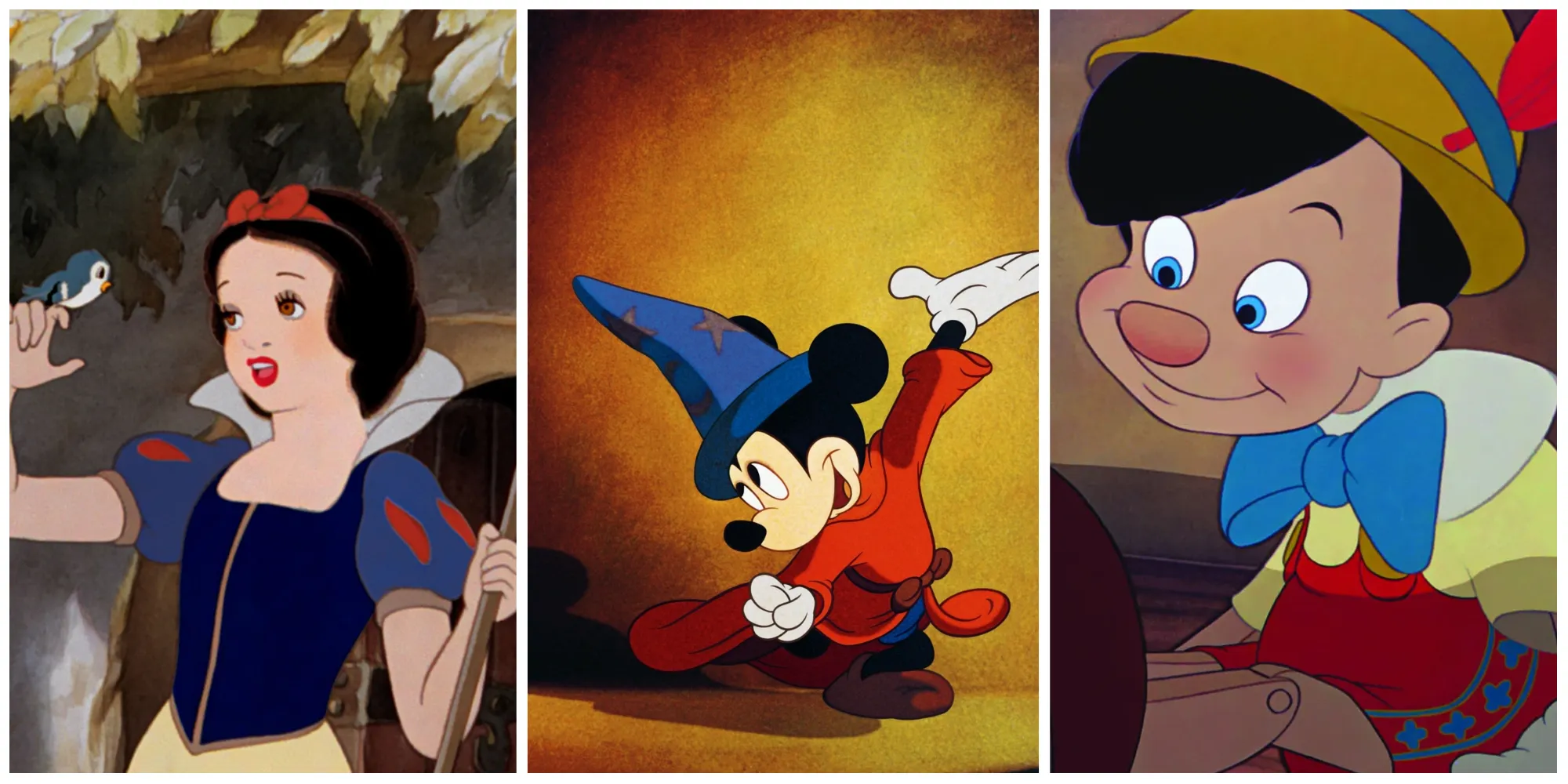“Disneyfication” (in sociological terms); The commercial transformation of things or environments into something simplified controlled and “safe”.
Usually, moguls and pundits tend to break the filmography of Disney Animation Studios up, into eras. It’s generally accepted that there are seven distinct eras of Disney Animation Studios.
You have; The Golden Era from 1937-1942, The Wartime Era from 1943-1949, The Silver Age from 1950-1959, The Bronze Age from 1970-1988, The Disney Renaissance from 1989-1999, The Post-Renaissance Era from 2000-2009 & currently what people refer to as The Revival Era, which is from 2010-Present.
I want to stress that this categorisation is subjective, but when you look at it, it does feel right. It feels as though the movies in said eras do group together nicely and each era does seem interested in certain distinct themes and that sort of thing.
I’ve taken a look at all the Disney Animation films released between the years 1937 and the year 2000 just to see the origin of these stories.
In total, between these years, there are 54 movies. I looked first of all at whether or not they were an adaptation, to begin with, and then looked at their country of origin, the status of the original work, if it was popular, if it was a folktale, a religious text, a mythological text etc. Of course, in some of these cases, the lines blur.
My concern with this is that in watching a Disney production that’s an adaptation, we might lose sight of the original artefact which may have much more value than the Disney production itself.
The goal here is to catalogue all of the Disney Animation Studio movies and to see what we can find.
In this first part of this ongoing series, I’ll be looking at the Golden Era (1947-1942) of Disney Animations Studios which is 5 films, and 5 absolute classics.
- Snow White and the Seven Dwarfs
- Pinocchio
- Fantasia
- Dumbo
- Bambi
SNOW WHITE
Snow White and the Seven Dwarfs was released in 1937 and is of course an iconic film, both unique and of great historical value.
Snow White was the first ever fully animated feature film, which is impressive, probably due to its commercial value.
I think Snow White is a really great movie and it’s amazing just how much Disney got right with their first try.
It has the music, colour and story that are all key in making a classic Disney movie, in fact, it was Snow White who wrote the recipe for this when you think about it.
The story is what we’re interested in though, where’s it come from? I’m sure a lot of you know this already, But Snow White was adapted from Grimm’s Fairy Tales, a collection of Fairy tales from throughout Germany compiled by the Brothers Grimm, two German brothers who collected numerous stories, many of which are now known to be classics.
So, it was a Germanic Folktale from the early 1800’s. There are a few differences between Grimm’s version and Disney’s version of the story, but aside from some smoothing of edges, they’re both essentially the same story, the Disney version of Snow White leaves out certain details such as the Witch being a cannibal and Snow White being comatose for a year rather than three days, all in all though, it’s a pretty faithful adaptation.
The brothers Grimm were two interesting figures and their work on Grimm’s Fairy tales is a massive and impressive undertaking. The Brothers believed that the most natural and pure forms of culture were linguistic and based on history, they managed to catalogue over 200 different German folktales and fairy tales, preserving some of the most essential and long-lasting texts in Europe.
The Brothers Grimm were also interested in telling cautionary tales for children, naturally, the fairy tales included in this book often had conservative and traditional values of the time.
I don’t really have an issue with Disney’s version of Snow White, but I am disappointed that it’s now well and truly overshadowed the original work. It’s interesting to me that the story of Snow White came from such humble beginnings, one of the two hundred German folktales collected and written by two men who felt that the text had great cultural value to their people.
That to me, is a far more interesting story, than the story of a movie that made a whole lot of money.
This isn’t the last time that we’ll see one of Grimm’s fairy tales appear on this list of Disney adaptations.
I get the feeling that The Brothers Grimm wouldn’t be too happy about one of their beloved folktales being known now, largely as an American success story in Hollywood, the character of Snow White, instead of being remembered as a folkloric Central-European princess, has been reduced to one of the Princesses in the Disney Princess Pantheon, alongside other Princesses grabbed from all over the world, that have nothing more in common than the fact, that they’re all princesses.
Nowadays, Is Snow White even remembered for much more than being, no one’s favourite, but the first Disney movie?

